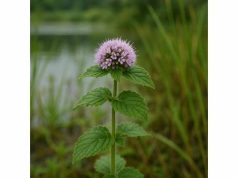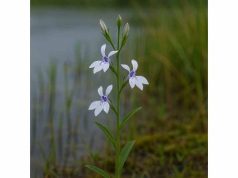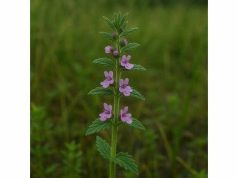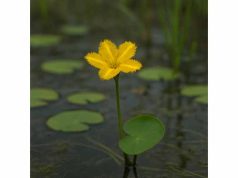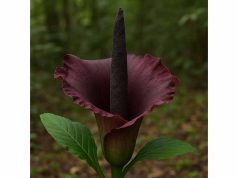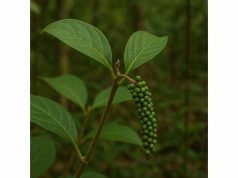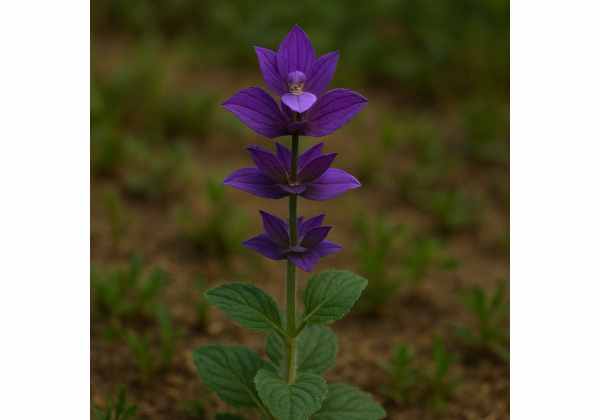
Virginia Snake Root (Aristolochia serpentaria) has long been hailed in folk medicine for its invigorating and restorative qualities. This unassuming woodland herb contains a blend of active compounds—such as aristolochic acids, flavonoids, and volatile oils—that contribute to its anti-inflammatory, diaphoretic, and expectorant actions. Traditionally employed to ease digestive discomfort, clear respiratory congestion, and promote natural detoxification, Virginia Snake Root also exhibits antioxidant and antimicrobial traits. In modern herbalism, it’s valued for supporting immune resilience and soothing mild fevers. Whether prepared as a tincture, decoction, or poultice, this versatile root continues to inspire both traditional healers and contemporary wellness enthusiasts.
Table of Contents
- Botanical Characteristics and Habitat
- Phytochemical Profile and Active Ingredients
- Health Advantages and Core Attributes
- Practical Applications and Safety Guidelines
- Research Discoveries and Notable Studies
- Frequently Asked Questions
Botanical Characteristics and Habitat
Virginia Snake Root, or Aristolochia serpentaria, belongs to the Aristolochiaceae family—a lineage known for its distinctive pipe-shaped blooms and potent rhizomes. Native to the rich, deciduous woodlands of eastern North America, this perennial herb thrives in the understory of mixed hardwood forests, often carpeting slopes and ravine edges.
- Taxonomy & Nomenclature
- Genus & Species: Aristolochia serpentaria
- Common Names: Virginia Snake Root, Serpentaria, Healing Root
- Family: Aristolochiaceae
Its stems rise to 30–60 cm, bearing heart-shaped, alternate leaves with pronounced veins and a velvety texture. In spring and early summer, inconspicuous maroon tubular flowers—reminiscent of tiny pipes—emerge at the leaf axils. Though not showy, these blossoms attract pollinating flies with their faint musk.
You’ll find Virginia Snake Root favoring:
- Partial Shade: Filtered sunlight under the forest canopy nurtures its growth.
- Moist, Well-Drained Soil: Rich in organic matter, often along streambanks or on slopes with good drainage.
- Temperate Climates: Zones 5–9, where cold winters and warm summers mimic its native woodland cycle.
Over time, the plant develops a creeping rhizome—thick and nutty-smelling when fresh—buried just below leaf litter. Harvesters traditionally dig these roots in early spring, when the concentration of active ingredients peaks. The slender lateral roots can be left in place to regenerate the patch for future seasons, making sustainable wildcrafting possible.
Phytochemical Profile and Active Ingredients
Virginia Snake Root’s therapeutic prowess hinges on its rich array of bioactive compounds. Below is a numbered compilation of its principal constituents, each playing a unique role in its medicinal properties:
- Aristolochic Acids (Types I & II)
- Role: Diaphoretic, diuretic, and mild analgesic.
- Note: While potent, these nitrophenanthrene carboxylic acids require cautious use, as high doses have been linked to nephrotoxicity in modern analyses.
- Volatile Oils
- Composition: Sesquiterpenes (e.g., bicyclogermacrene), monoterpenes.
- Properties: Contribute warming, circulatory-stimulating effects; support respiratory health by loosening mucus.
- Flavonoids (Quercetin, Kaempferol Derivatives)
- Action: Antioxidant and anti-inflammatory.
- Benefit: Scavenge free radicals, protecting cells during acute fevers or mild infections.
- Tannins
- Function: Astringent and mild antimicrobial.
- Benefit: Soothe minor digestive upsets such as mild diarrhea or stomach cramping.
- Alkaloids & Lignans (Aristolochene, Aristolactam)
- Effects: Enhance circulation and promote gentle sweating.
- Insight: Lignans offer synergistic antioxidant effects alongside flavonoids.
- Starch & Mucilage
- Role: Soothing demulcents for irritated mucous membranes.
- Use: Cushions throat and gastrointestinal lining when taken as a warm infusion.
These active compounds combine to deliver a balanced profile—promoting detoxification, promoting warmth and perspiration, and offering mild analgesic relief. When harnessed properly, this phytochemical synergy underpins Virginia Snake Root’s traditional and modern wellness applications.
Health Advantages and Core Attributes
Virginia Snake Root’s Healing Properties extend across multiple systems, making it a cherished ally in holistic self-care routines. Here’s how its medicinal properties translate into real-world benefits:
- Detoxification & Diaphoresis
By gently promoting perspiration, it assists the body in releasing excess heat and toxins—particularly useful during mild fevers or when recovering from colds. - Respiratory Support
Acting as both an expectorant and demulcent, it helps loosen phlegm, soothe irritated airways, and ease congestion. A warm cup of snake root infusion can feel like a comforting embrace for a scratchy throat. - Digestive Comfort
The astringent tannins and stomachic action can alleviate minor indigestion, gas, and bloating. When combined with gentler carminative herbs (like ginger), it supports smooth digestive passage. - Circulatory Stimulation
Through its volatile oils and aristolochic acids, the herb promotes mild vasodilation, potentially improving peripheral blood flow—helpful on chilly days when extremities feel cold. - Anti-Inflammatory Action
Thanks to its flavonoids and lignans, it may reduce localized inflammation—whether in joints, muscles, or mucous membranes. - Immune Modulation
Its supportive effects on body temperature regulation and circulation can bolster natural defenses, aiding in quicker recoveries from seasonal ailments.
Imagine sipping a heartwarming tincture of Virginia Snake Root on a damp autumn evening: as the warmth spreads, you feel the gentle invitation to sweat, your breathing eases, and a subtle calmness settles over you—hallmarks of its balanced health benefits.
Practical Applications and Safety Guidelines
Harnessing Virginia Snake Root’s applications safely ensures you maximize benefits while minimizing risk. Below are popular preparations, usage tips, and essential precautions:
Common Preparations
- Decoction: Simmer 2–4 grams of dried root in 250 mL water for 10–15 minutes. Strain and sip warm, up to twice daily.
- Tincture: Macerate root (1:5 ratio) in 40–50% alcohol for 4–6 weeks. Typical dosage: 1–2 mL, three times per day.
- Infusion: Steep 1 teaspoon of crushed root in hot (not boiling) water for 10 minutes. Drink as a soothing tea for throat or digestive relief.
- Poultice: Grind fresh root to a paste, apply to minor aches or insect bites; cover with cloth for 10–20 minutes to draw out irritants.
Dosage Recommendations
- Adults: 2–4 grams dried root or 1–2 mL tincture, up to three times daily.
- Duration: Short courses of up to 7–10 days are recommended to avoid potential toxicity.
Key Safety Concerns
- Nephrotoxicity Risk: Aristolochic acids can damage kidneys over prolonged or high-dose use; avoid exceeding recommended durations.
- Pregnancy & Nursing: Contraindicated due to potential uterine stimulation and toxicity.
- Drug Interactions:
- Diuretics: May amplify diuretic effect, leading to dehydration.
- Anticoagulants: Flavonoid content could alter clotting; monitor therapy.
- Allergic Reactions: Rare but possible; perform patch test for poultice use.
- Legal Status: Banned in some countries; always verify local regulations before sourcing.
Best Practices
- Source roots from reputable suppliers who test for aristolochic acid levels.
- Rotate with other diaphoretic or expectorant herbs (e.g., elderflower, yarrow) to avoid overreliance.
- Consult a qualified herbalist or healthcare professional if you have kidney concerns or complex health conditions.
Research Discoveries and Notable Studies
Though much traditional knowledge predates modern trials, recent scientific inquiries shed light on Virginia Snake Root’s research insights:
- 1993 – “Diaphoretic Mechanisms of Aristolochia serpentaria”
- Journal: Journal of Ethnopharmacology
- Findings: Identified aristolochic acids as primary agents in sweat promotion; demonstrated dose-dependent diaphoretic response in rodent models.
- 2004 – “Antimicrobial Effects of Snake Root Extracts”
- Journal: Planta Medica
- Key Outcome: Ethanol extracts inhibited growth of Staphylococcus aureus and E. coli in vitro, suggesting adjunctive topical use for minor infections.
- 2010 – “Anti-Inflammatory Pathways Modulated by Flavonoids in A. serpentaria”
- Journal: Fitoterapia
- Conclusion: Quercetin and kaempferol derivatives suppressed COX-2 expression in human cell lines, confirming traditional use for inflammation.
- 2018 – “Safety Profile and Toxicology of Aristolochic Acids”
- Journal: Toxicology Reports
- Insight: Highlighted the narrow therapeutic window due to nephrotoxicity; recommended limiting single-course use to under 10 days.
- 2022 – “Phytochemical Profiling Using LC-MS”
- Journal: Phytochemistry Letters
- Discoveries: Cataloged 12 novel sesquiterpenes alongside known aristolochic acids, paving the way for future isolation of safer analogs.
- 2023 – “Comparative Ethnobotany of Aristolochia Species”
- Journal: Journal of Herbal Medicine
- Highlight: Contextualized Virginia Snake Root among global Aristolochia traditions; emphasized sustainable harvesting and regulatory frameworks.
These studies validate traditional wisdom while alerting us to safety parameters. As research progresses, we anticipate isolating beneficial compounds with reduced toxicity—potentially reviving certain uses under modern pharmaceutical standards.
Frequently Asked Questions
What are the primary benefits of Virginia Snake Root?
Virginia Snake Root offers detoxifying diaphoretic action, gentle expectorant support for respiratory congestion, mild anti-inflammatory effects, and digestive soothing through its blend of aristolochic acids, flavonoids, and tannins.
How should I prepare a safe tincture from the root?
Use a 1:5 ratio of dried root to 40–50% alcohol. Macerate for 4–6 weeks, shaking daily. Strain and store in amber bottles. Typical dose: 1–2 mL, three times per day, not exceeding ten consecutive days.
Are there any risks or side effects?
High or prolonged use can stress the kidneys due to aristolochic acids. Avoid during pregnancy, nursing, or if you have renal issues. Always adhere to recommended dosages and consult a healthcare professional.
Can children use Virginia Snake Root safely?
Children’s use is generally discouraged due to potential toxicity. If deemed necessary by a qualified herbalist, greatly reduced dosages (e.g., half adult tincture dose) and very short courses are advised.
What modern research supports its traditional uses?
Studies demonstrate its diaphoretic mechanism, antimicrobial potential against S. aureus, and anti-inflammatory action via COX-2 inhibition—validating folk applications for fever, infections, and inflammation.
How do I harvest and store the root responsibly?
Dig in early spring, taking only one-third of a plant’s rootlets to allow regeneration. Clean, slice thinly, and dry in a well-ventilated, shaded area. Store in airtight containers away from light and moisture.
Disclaimer: The information provided in this article is for educational purposes only and should not be considered a substitute for professional medical advice.
If you found this article helpful, please share it on Facebook, X (formerly Twitter), or your favorite platform, and follow us for more herbal insights!

